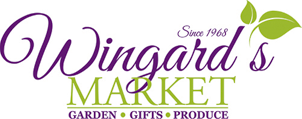by Kathy Torres
April is the official start time for planting many summer vegetable plants in the midlands of South Carolina, even though we may have to cover and protect tender new plants when a late frost or freeze occurs. For first-time vegetable gardeners, it’s a good idea to start with those veggies that are EASIEST and give a BOUNTIFUL HARVEST. It is so easy to go crazy and purchase an enormous selection of plants with a vision of a regular farmer’s market flowing from your garden, but, our recommendation is that you start slow and easy to afford yourself the best chance of success. Then, next year, you can go crazy!
So…we came up with a short list of five, along with recommended cultivars, that are great for starter vegetable gardeners:
 SNAP BEANS: Rapid growing, early maturing and productive, bush and pole (vine) form snap beans are a popular choice for the home garden.
SNAP BEANS: Rapid growing, early maturing and productive, bush and pole (vine) form snap beans are a popular choice for the home garden.
Blue Lake 274 (bush) – A string-less, bush variety, there is no need for staking. The beans are long and straight, with superior flavor, color and texture. They can produce large yields within a few weeks, leaving time for a second crop, and are typically low maintenance (resistant to bean mosaic virus). To harvest beans, break off the stem above the cap. Quality is best if beans are harvested in early morning hours. Bush Blue Lake is an heirloom variety and has been around since the early 1900s.Kentucky Wonder (pole) – Because they grow upward, pole beans are a great space saver in the garden. A sturdy trellis is required for support, at least 6-8 feet tall. Kentucky Wonder is a green pole bean with seven to nine inch long, fleshy pods that can be slightly stringy. They are curved with seeds filling to the tip and edge but not crowded, very reliable and rust resistant. Harvest beans every three to five days once they start producing, removing all bean pods when they are plump and you can see the beans in the pods. (For less stringy beans, harvest before they mature). Also an heirloom variety, Kentucky Wonder was first sold commercially in 1877.
 TOMATOES: Hundreds of tomato cultivars are available, so make it easy on yourself and start with these, which are all fairly disease resistant. Staking, caging, and trellising are good ways to keep the plants and fruit up and off the ground, providing easier access for picking and spraying, and allows airflow to prevent disease. Pinch off suckers growing between the main stalk and branches.
TOMATOES: Hundreds of tomato cultivars are available, so make it easy on yourself and start with these, which are all fairly disease resistant. Staking, caging, and trellising are good ways to keep the plants and fruit up and off the ground, providing easier access for picking and spraying, and allows airflow to prevent disease. Pinch off suckers growing between the main stalk and branches.
Determinate tomato plants grow to a certain size, set fruit, and then decline. Most early-ripening tomato cultivars are determinate and won’t produce tomatoes throughout a South Carolina summer. Indeterminate tomato plants continue to grow and produce for an extended season. Fruit production may continue until the first frost.Better Boy is indeterminate and one of the most popular tomatoes grown in the US. It’s actually in the Guinness Book of World Records for the amount of fruit produced from a single plant. Superior flavor, large size, disease resistance, and high yields make this cultivar one of the easiest slicing tomatoes to grow. Not suitable for containers, Better Boy must be caged or staked.
Better Bush is a semi-determinate tomato plant growing to 4 ft. This is a great choice that bears sizeable fruits on a very compact plant that works well in containers and small gardens. Strong, bushy plants produce tasty, medium-sized tomatoes great for sandwiches and slicing. The heavy foliage of this hybrid helps protect tomatoes from sunburn.
Sweet 100’s are vining cherry tomatoes and do best growing on a trellis. Early maturing, these sweet gems are great for snacking (right off the vine) and salads, and will produce large clusters of tomatoes all summer long up until frost. What do you think…indeterminate? Yep!
TIP: Add Stout Ollie compost and Calcium Nitrate to the soil when planting tomatoes to enrich the soil and reduce the risk of Blossom End Rot, a nasty disease that ruins the fruit. Also, be sure to water consistently, not allowing the soil to totally dry out between waterings.

 CUCUMBERS: Cucumber plants grow in two forms: vining and bush. Vines need a trellis to keep them off the ground, and produce more fruit the more you harvest. To remove the fruit, use a knife or clippers, cutting the stem above the fruit. Pulling them may damage the vine. Don’t let the cucumbers get oversized or yellow on the end or they will be bitter.
CUCUMBERS: Cucumber plants grow in two forms: vining and bush. Vines need a trellis to keep them off the ground, and produce more fruit the more you harvest. To remove the fruit, use a knife or clippers, cutting the stem above the fruit. Pulling them may damage the vine. Don’t let the cucumbers get oversized or yellow on the end or they will be bitter.
Burpless Bush Hybrid is excellent in small gardens and containers. A space-saving form with short vines growing about 2 ft. long. Fruit is smooth-skinned, dark green, straight and approximately 10-12 inches long. Enjoy high yields, great for pickling or slicing.Boston Pickling is a popular American heirloom cucumber first marketed in 1877 by the pioneering Detroit-based seed company, D.M. Ferry & Co. A favorite of gardeners for high yields of short, straight “cukes” with thin, green skin. Vines bear continuously and should be trellised. Flesh is crisp and very receptive to pickling spices. May be harvested at sizes from 3 to 7 inches, depending on your pickling needs. Plants resist scab and are tolerant to cucumber mosaic.
 YELLOW SUMMER SQUASH are harvested when immature, while the rind is still tender and edible.
YELLOW SUMMER SQUASH are harvested when immature, while the rind is still tender and edible.
Crookneck squash are named for the slight curves in their narrow necks. These fast-growing plants can spread 3 to 4 feet across with leaves that are 1 to 2 feet wide, so leave plenty of space for them to spread. Their yellow fruits, which form underneath the leaves, can have smooth or bumpy skins. Because they’re bushy plants, crookneck squash don’t have to be staked and can grow in large containers or in the ground. Use a knife or garden shears to cut the fruits off the plant when they are 5 to 6 inches long. If you harvest fruits regularly, the plants will bear until frost.Straightneck squash have a tapered, straight neck with creamy yellow, mildly sweet, tender fruit of excellent quality early in the season. This squash grows on vined plants that thrive in mild weather. The straight shape makes it perfect to slice into lengths for grilling.
 BELL PEPPERS are a warm-weather fruit, appreciated for cooking and eating raw. Crunchy, sweet bell pepper plants lack capsaicin, the active component in hot peppers that gives them their heat. The fruits can be harvested when they are green, to increase the yields. Alternatively, the fruits can be allowed to ripen to red, leaving them time to develop flavor with smaller yields. Provide support for the limbs, to hold the weight of the peppers by caging or staking.
BELL PEPPERS are a warm-weather fruit, appreciated for cooking and eating raw. Crunchy, sweet bell pepper plants lack capsaicin, the active component in hot peppers that gives them their heat. The fruits can be harvested when they are green, to increase the yields. Alternatively, the fruits can be allowed to ripen to red, leaving them time to develop flavor with smaller yields. Provide support for the limbs, to hold the weight of the peppers by caging or staking.
Big Bertha is the largest elongated bell pepper available! Thick-walled, 7-inch long fruit, plants are disease resistant and ideal for giant stuffed peppers.
ALL OF THE ABOVE need the following to flourish and produce high yields:
- Good, fertile, well-drained soil. Add compost when preparing the soil and fertilize regularly after planting.
- Sun, a minimum of 6 hours, but all day is even better.
- Regular, consistent watering, sometimes twice a day when temperatures get above 80 degrees. Avoid overhead irrigation; use soaker hose to decrease chances of fungus.
- Insect and disease control. Be on the lookout for leaves/fruit with spots or holes and contact Wingard’s to get advice on the best solution. There are many products available for edibles.
For more information on vegetable gardening, visit our Blog: “Vegetable Gardening”
There’s Always Something Blooming at Wingard’s!

